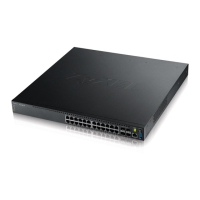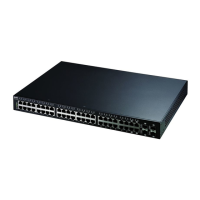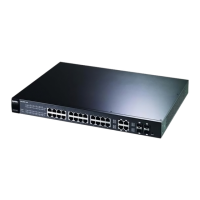Chapter 11 Spanning Tree Protocol
GS3700/XGS3700 Series User’s Guide
145
11.7 Multiple Rapid Spanning Tree Protocol Status
Click Advanced Application > Spanning Tree Protocol in the navigation panel to display the
status screen as shown next. See
Section 11.1 on page 132 for more information on MRSTP.
Note: This screen is only available after you activate MRSTP on the Switch.
Figure 99 Advanced Application > Spanning Tree Protocol > Status: MRSTP
Root Guard
(Standalone
mode)
Select this check box to enable root guard on this port in order to prevent the switch(es)
attached to the port from becoming the root bridge.
With root guard enabled, a port is blocked when the Switch receives a superior BPDU on
it. The Switch allows traffic to pass through this port again when the switch connected to
the port stops to send superior BPDUs.
Priority Configure the priority for each port here.
Priority decides which port should be disabled when more than one port forms a loop in
the Switch. Ports with a higher priority numeric value are disabled first. The allowed range
is between 0 and 255 and the default value is 128.
Path Cost Path cost is the cost of transmitting a frame on to a LAN through that port. It is
recommended that you assign this value according to the speed of the bridge. The slower
the media, the higher the cost - see
Table 55 on page 132 for more information.
Tree Select which STP tree configuration this port should participate in.
Apply Click Apply to save your changes to the Switch’s run-time memory. The Switch loses
these changes if it is turned off or loses power, so use the Save link on the top navigation
panel to save your changes to the non-volatile memory when you are done configuring.
Cancel Click Cancel to begin configuring this screen afresh.
Table 60 Advanced Application > Spanning Tree Protocol > MRSTP (continued)
LABEL DESCRIPTION

